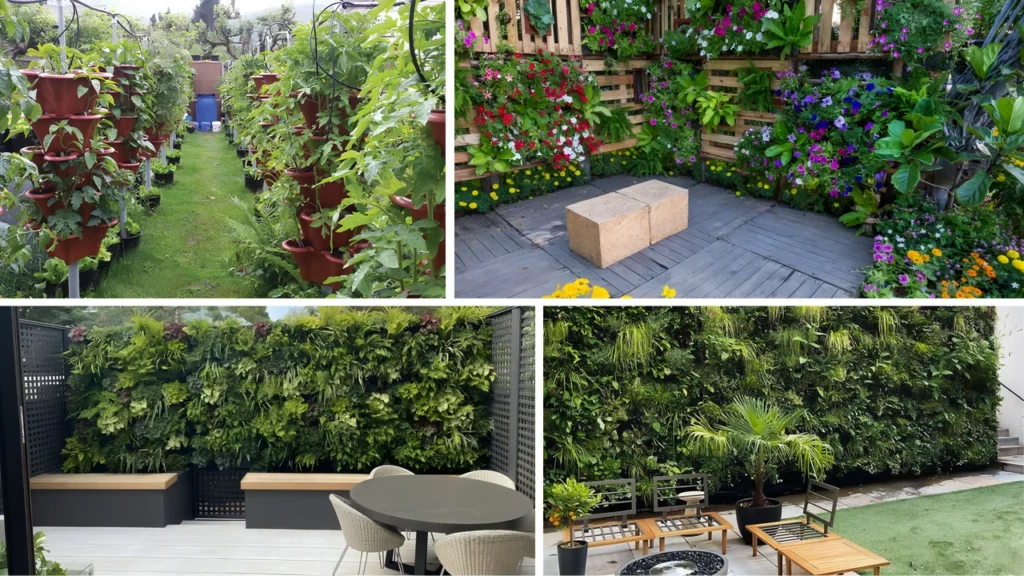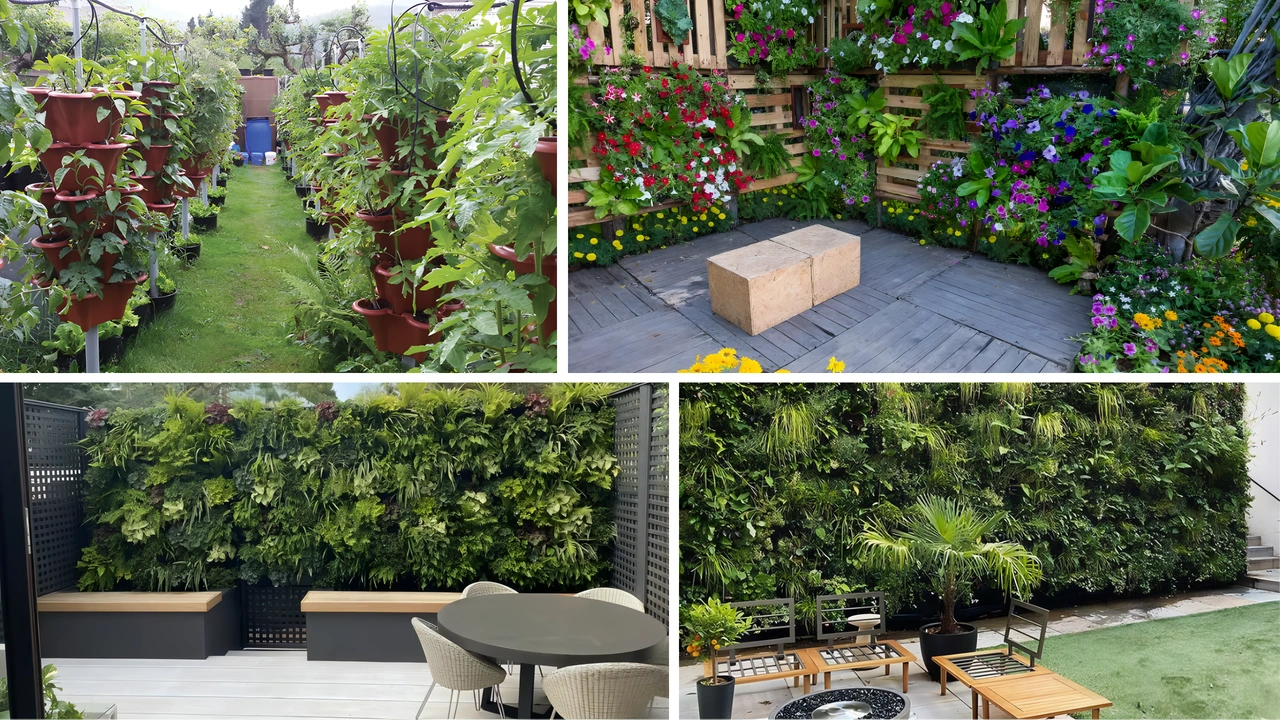Join on WhatsApp
Get the latest updates directly on WhatsApp – motivation, news & more!
If you’re short on ground space but big on gardening dreams, it’s time to build your garden to new heights. This complete vertical gardening blueprint for any space will walk you through everything—from choosing the right structure and plants to maintenance, watering, and style. Whether you live in a high-rise apartment, a narrow balcony, or a compact backyard, this guide proves that growing upward is the smartest, greenest way to garden today.

Why Build Your Garden to New Heights?
The idea of building your garden to new heights isn’t just trendy—it’s transformative. A vertical gardening blueprint is about more than just saving space. It’s about creating a thriving ecosystem in limited areas, improving air quality, increasing insulation for walls, and giving your space a fresh, vibrant look.
In cities and small homes, soil and horizontal space can be a luxury. A vertical garden uses gravity, creativity, and smart design to let you grow herbs, flowers, and even veggies vertically—on walls, fences, trellises, or freestanding structures. It’s time to think beyond pots and beds and look up.
Types of Vertical Gardens That Match Any Space
Not all vertical gardens are the same, and that’s the beauty of building your garden to new heights. Depending on your space and style, you can choose from several types of vertical setups.
| Vertical Garden Type | Best For | Pros |
|---|---|---|
| Wall-Mounted Planters | Balconies, patios, kitchen walls | Saves floor space, easy to maintain |
| Freestanding Structures | Rooftops, small gardens | Portable, customizable |
| Trellis or Climbing Frames | Backyards, fences | Great for vines, adds aesthetic value |
| Pocket Planters (Fabric) | Indoor walls, balconies | Lightweight, breathable, easy install |
| Gutter Gardens | Fences, balconies | Recycled DIY, good for herbs/succulents |
Each of these options fits into a complete vertical gardening blueprint depending on the available light, airflow, and your commitment level.
Choosing Plants to Build Your Garden to New Heights
When following a vertical gardening blueprint for any space, plant selection is key. Plants that naturally trail, climb, or grow compactly are ideal. Here’s a breakdown to guide your choices:
- Herbs: Basil, thyme, oregano, mint – great for wall-mounted or pocket gardens.
- Leafy Greens: Lettuce, spinach, kale – work well in tiered shelves.
- Fruiting Plants: Strawberries, cherry tomatoes – need strong support and sunlight.
- Climbers: Peas, beans, cucumbers – perfect for trellises or frames.
- Flowers: Petunias, nasturtiums, pansies – for adding vibrant colors.
Your vertical garden should reflect your needs—whether you’re after beauty, flavor, or both. Building your garden to new heights means embracing smart choices and sustainable growth.
Materials & Tools for Your Vertical Gardening Blueprint
A complete vertical gardening blueprint for any space includes knowing exactly what you need to get started. Here’s a simple starter checklist:
Basic Tools:
- Drill/screwdriver
- Garden scissors or pruners
- Measuring tape
- Waterproof liner (for indoor use)
- Hanging hooks/brackets
Materials:
- Planter boxes or pots
- Trellis, pallet, or wooden frame
- Geotextile fabric or breathable canvas (for pocket planters)
- Potting mix (lightweight and nutrient-rich)
- Organic fertilizer or compost
The goal is to build your garden to new heights with durable, low-maintenance, and eco-conscious materials. Don’t overcomplicate—simplicity often grows best.
Watering & Drainage: Keeping Vertical Gardens Thriving
One of the key challenges when you build your garden to new heights is watering. Gravity works against you if you’re not careful, which is why your vertical gardening blueprint must include a watering strategy.
- Top-to-Bottom Watering: Let water drip from the top planters and nourish the lower levels.
- Drip Irrigation: A low-maintenance system that distributes water evenly.
- Self-Watering Systems: Great for busy gardeners—these have built-in reservoirs.
- Hand Watering: Best for small vertical setups; use a watering can with a narrow spout.
Always make sure there’s proper drainage to prevent root rot. Line your containers with gravel or use breathable fabrics to keep roots healthy while allowing excess water to escape.
Sunlight, Soil & Seasonal Considerations
When you build your garden to new heights, vertical means your plants may get uneven sun exposure. The top tier often gets more light than the lower levels.
Light Management Tips:
- Rotate your plants every few weeks to balance sunlight exposure.
- Use mirrors or light-colored walls to reflect sunlight.
- Choose shade-tolerant plants for lower levels.
Soil Tips:
- Use lightweight, moisture-retaining soil.
- Mix in compost or organic matter regularly.
Seasonal Shifts:
- In hot climates, water more often and use shade cloth.
- In colder areas, consider portable structures that can be moved indoors.
A complete vertical gardening blueprint prepares you for year-round success, not just seasonal surprises.
Styling Tips: Build Your Garden to New Heights Beautifully
Vertical gardens can be both practical and artistic. If you’re following this vertical gardening blueprint for any space, don’t forget aesthetics.
- Color Coordination: Use pots in complementary shades.
- Patterns: Alternate plant heights and textures for visual flow.
- Upcycled Materials: Use old crates, ladders, or pallets to add rustic charm.
- Symmetry or Asymmetry: Match your space style—urban chic or wild boho.
Vertical gardens make stunning living walls, so build your garden to new heights with creativity in every detail.
Maintenance: Keeping Your Vertical Garden Fresh
Once you’ve built your garden to new heights, keeping it healthy is key. Your vertical gardening blueprint must include regular care routines.
Weekly Checklist:
- Check for pests under leaves.
- Water and prune dead leaves.
- Rotate pots or tiers for balanced growth.
- Refill nutrient levels with compost or liquid fertilizer.
Monthly Checklist:
- Deep clean planter surfaces.
- Inspect for root-bound plants and repot if necessary.
- Adjust trellises or support frames as plants grow.
With a little attention, your vertical garden can flourish and become a lasting part of your home environment.
Build Your Garden to New Heights—A Vertical Gardening Blueprint That Works Anywhere
By now, you’ve explored the full journey of how to build your garden to new heights using this complete vertical gardening blueprint for any space. From choosing the right structure and plants to watering, soil care, aesthetics, and maintenance, you’re now equipped to transform any wall, balcony, or corner into a lush, living masterpiece.
This isn’t just about growing plants—it’s about growing possibilities, no matter how small your space is. With vertical gardening, you don’t need more land—you just need a new angle.
So grab your tools, pick your plants, and start building your vertical garden today. Because when you grow up, there’s no limit to what you can grow.


